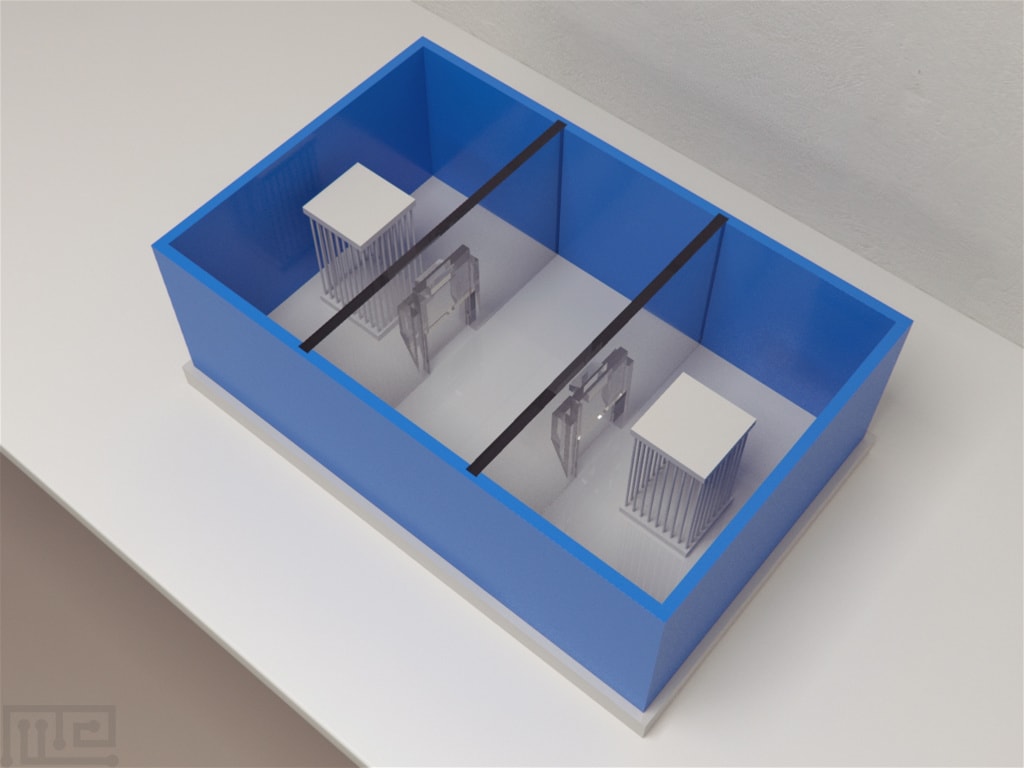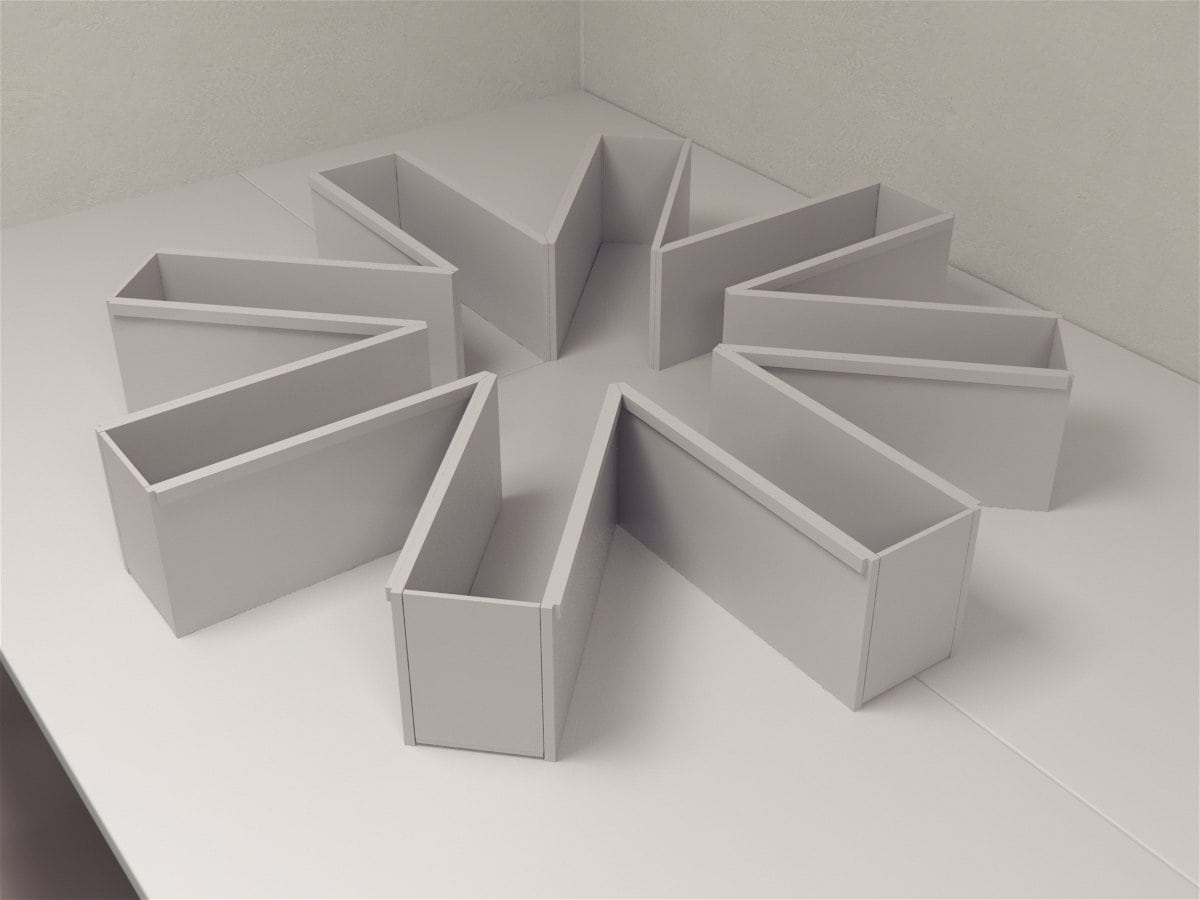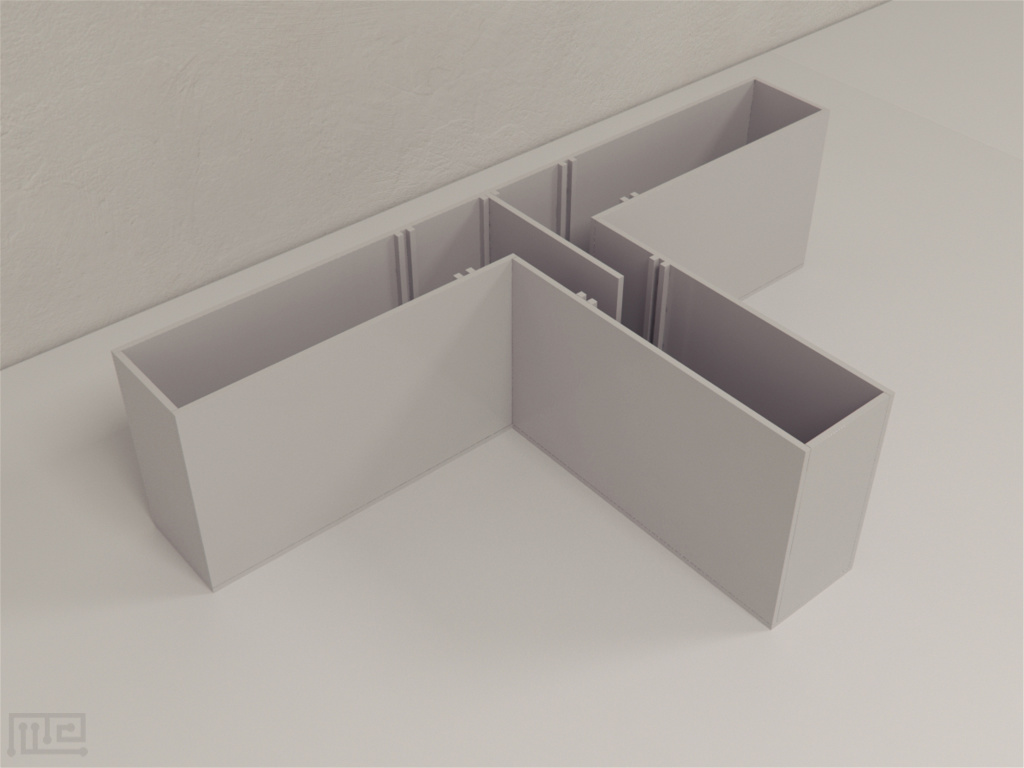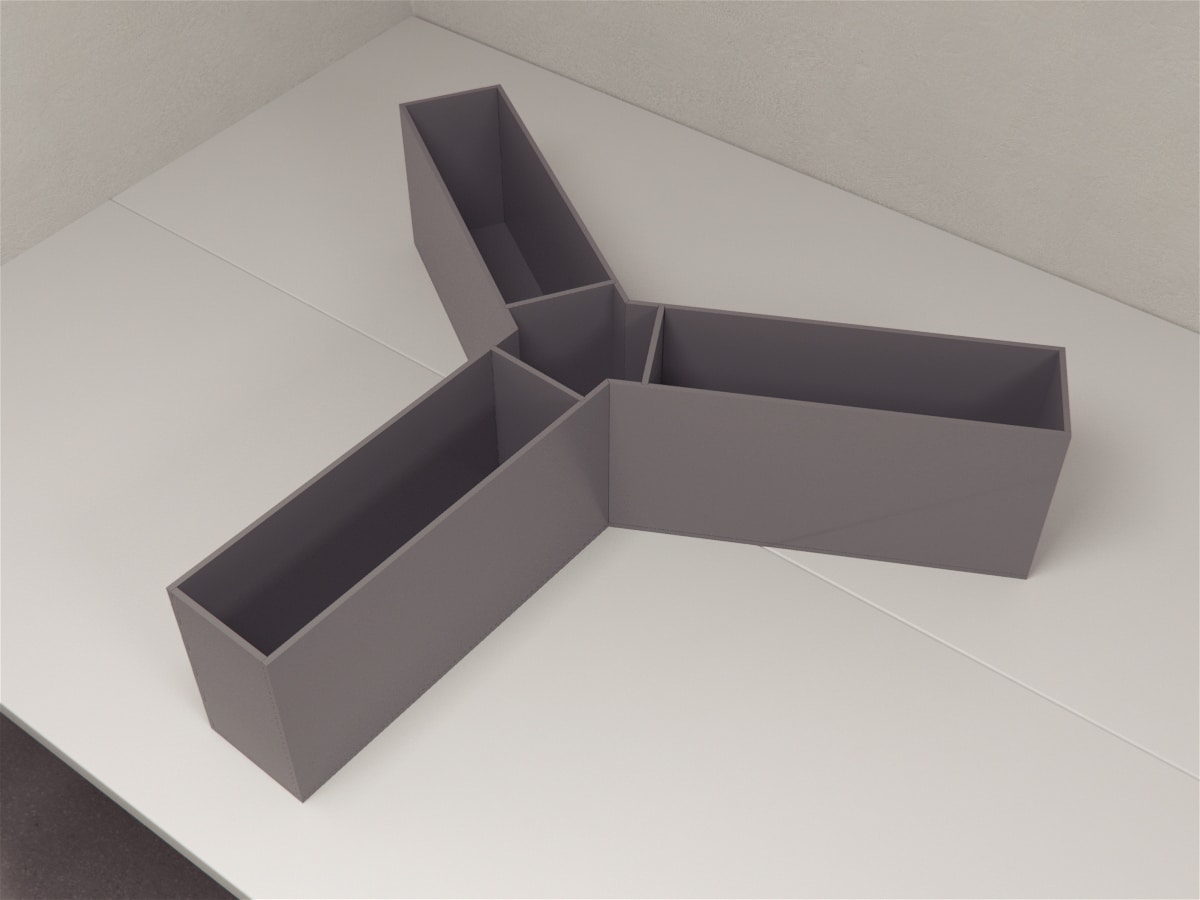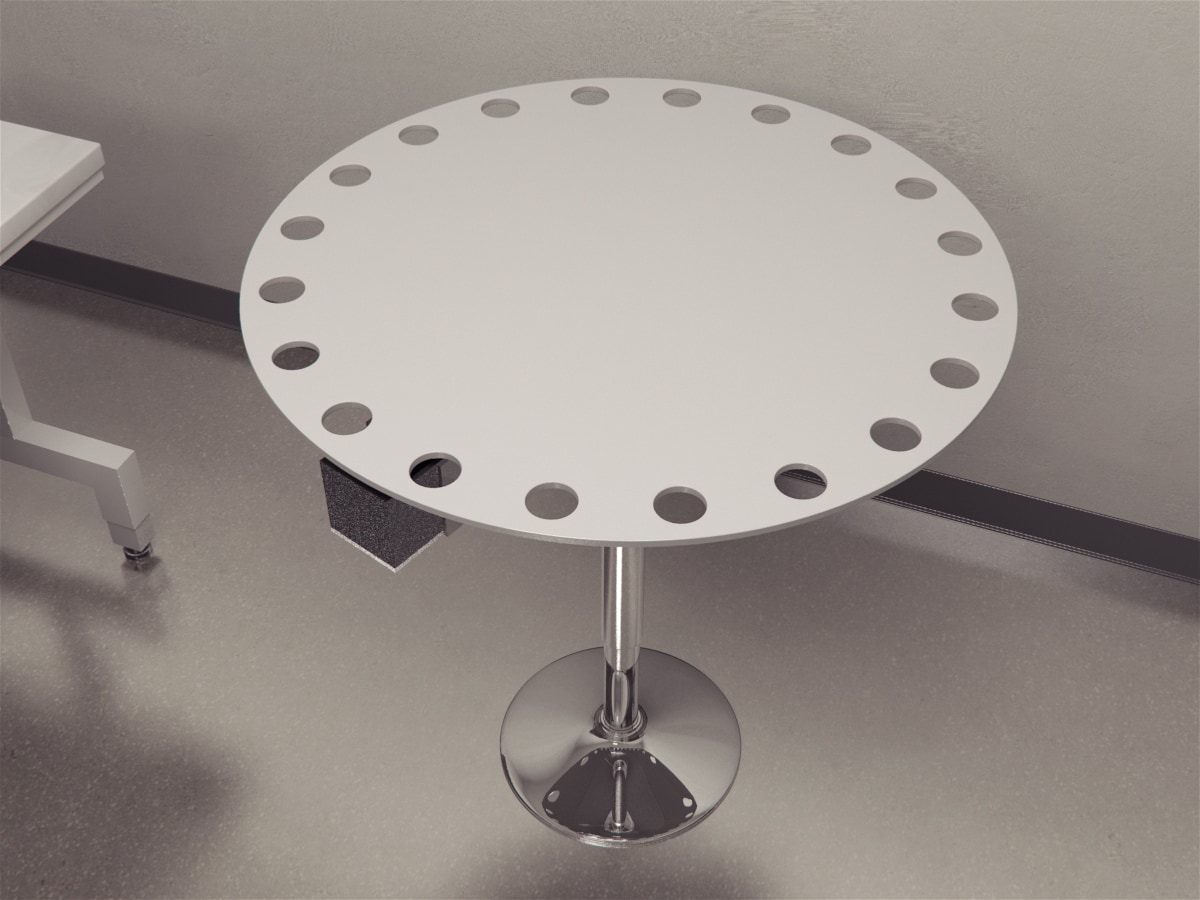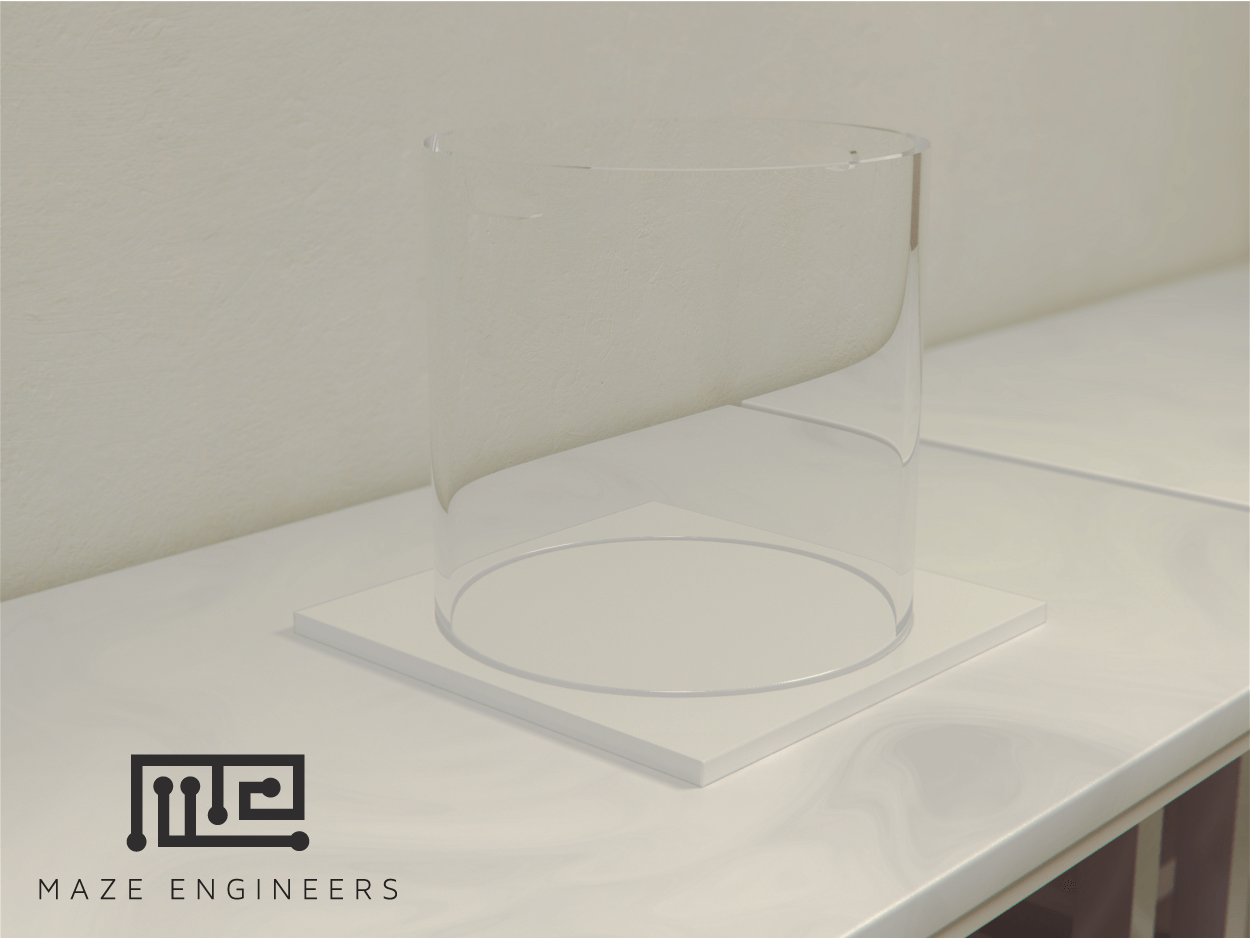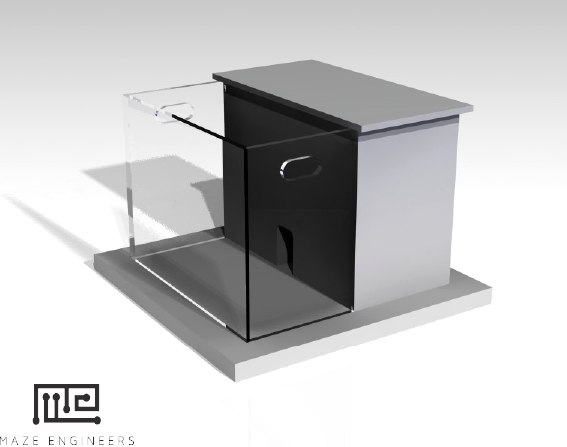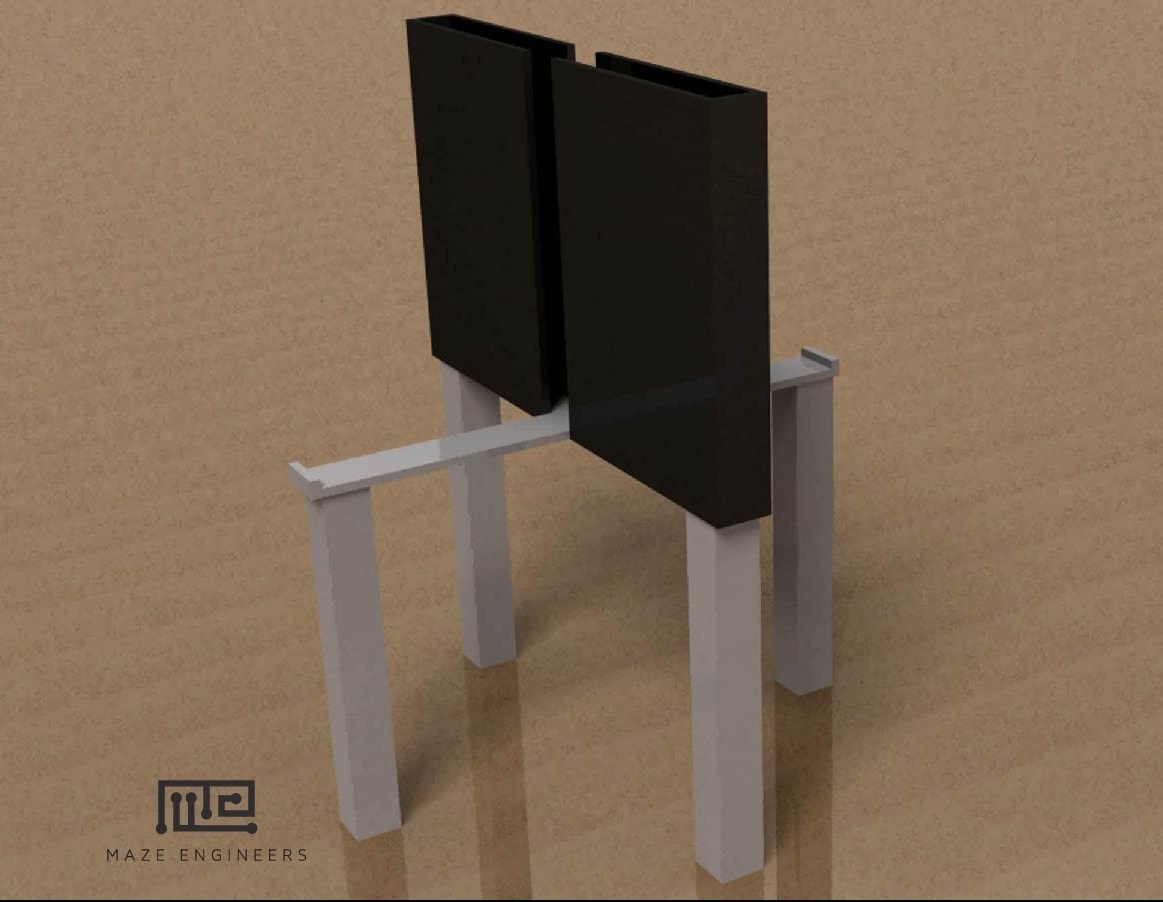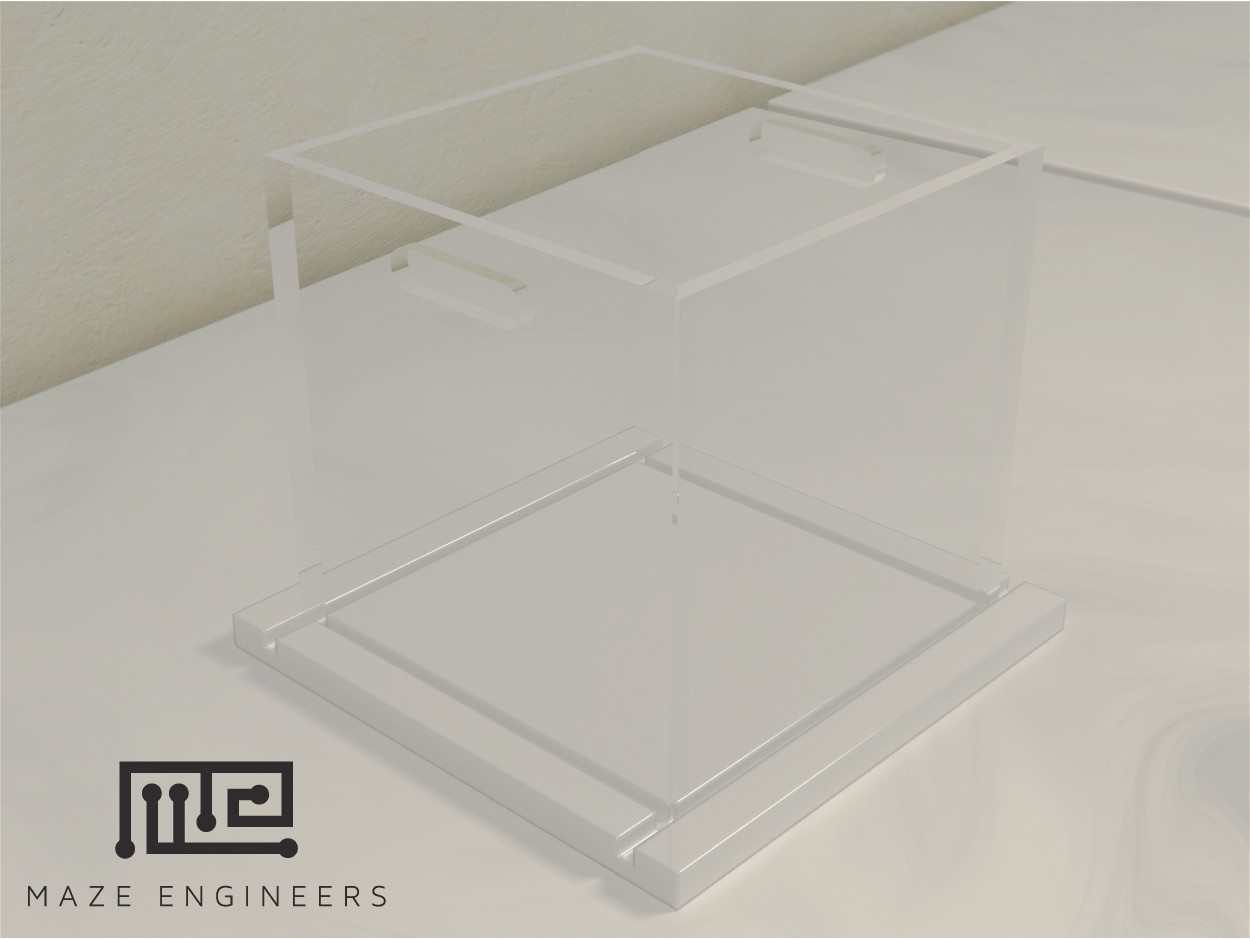Behavioral testing in rodents is one of the necessary steps needed for the creation of new medication. Before any new drug becomes a product that can be used by the wider public it needs to go through extensive research. The medication that influences the nervous system or the cognitive functioning of the brain like the drugs used for Alzheimer’s disease, schizophrenia, anxiety, and depression-related disorders all get tested on small rodents, most notably mice and rats. In fact, behavioral research makes sure of many neurological disease models, but also non-neurological disease models. This practice is in use for more than fifty years and it represents one of the first steps in the pharmaceutical testing process.
There are many reasons why such tests are performed on small rodents, including:
- Small rodents are culturally more likely to be used for pharmaceutical testing, as they are not considered pets by most people.
- Rats and mice display behavior that can be monitored and interpreted relatively clearly, making it easier for scientists to interpret the effect of the drug or intervention.
- A lot of development has been made using mice and rats to model numerous human diseases, making them ideal for studying the relationship between behavior, disease, and pharmaceutical effects.
Behavioral Testing in Practice
To test your hypothesis and/or pharmaceutical intervention you will need an assortment of specialized behavioral mazes designed for rodent behavior testing. Utilizing the different mazes, you can observe the precise influence new drugs (and their various dosage levels) have on the nervous system. For this reason, we will look at the major issues and facts you should know before you equip your laboratory with a set of behavioral mazes, including:
- the general requirements you need to consider when selecting mazes, and
- any other factors that can influence your choice.
Afterwards, we will list the ten most commonly utilized mazes in behavioral research. After that, we will conclude with a small section that focuses on why hygiene and animal care are also important for the successful use of behavioral maze.
Choosing the Right Research Model
Using rodents for pharma testing is standard practice, especially since animal testing is the first prerequisite to demonstrate efficability prior to testing it in human subjects, but you need certain tools to do the process properly. It is not enough to administer the new drug and observe the rodent you’ve selected in any given space. You must do this in a controlled and replicable manner.
You must select the appropriate rat or mouse strain and the appropriate model of the disease you are testing. For more information, check out our Mouse Strain Library, a catalogue profiling the mouse strains used in behavioral research in detail.
Furthermore, mice and rats need to be stimulated in the right way and you need to know the significance of what you have observed. A variety of mazes exist which have been carefully engineered and crafted for the purpose of aiding you to investigate specific dimensions of mouse behavior. There is a maze for just about any facet of behavior and cognition that you could think of. But, more of this will be discussed later on.
How Do You Choose the Best Maze?
In this section, we will take a general approach to review the most important factors that you should consider before investing in behavioral and neuroscience mazes.
We will also briefly go over the process of experimentation and testing. However, if you wish to go into greater detail on any of these topics, we extremely suggest for you to read Douglas Wahlsten’s work titled Mouse Behavior Testing: How to Use Mice in Behavioral Neuroscience.
Before the Testing
Before you begin the actual behavioral testing, you need a game plan in mind. You need to think of all the details and create a detailed, appropriate protocol. We’ve created a mini-checklist for you to help get you started:
- Determine what you want to test. A characteristic of a good experiment and hypothesis is that it’s focused and investigates specific aspects of behavior and cognition. Thus, be specific about what you want to test in your study from the get-go. Is it anxiety? Response to fear? Spatial learning and memory? Investigative and/or social interaction? If you know exactly what you want to study, then it will be easier for you to pick the right maze later on.
- Familiarize yourself with the type of test animal/rodent you will use. Although mice and rats have many similarities, they have many differences, too. Depending on which one you pick for your experiment, subtle differences in the animals may influence your results. For example, when placed in water (a common practice for testing memory, but more on that later), mice have a bigger stress response than rats do. This, in turn, could influence results since stress impacts the organism. Thus, it is important to know the nuances between the animals and plan accordingly.
- Keep the order of testing in mind. Make sure you understand the testing process and how it functions. Each maze is used in a different way and sometimes they are used together as a battery of tests that complement each other and can help us better determine the exact extent of the drug’s influence. So, when planning the testing process consider all of your options. That means that you have to know something about each of the mazes even if you will not use all of them, and consider the possibility that your chosen testing order may influence results. For example, it is common to save more stressful tests for the end.
Setting Up The Testing Process
As mentioned previously, when establishing your testing process, you should have a thorough and detailed protocol. To do this, you can follow the ARRIVE Guidelines (Animal Research: Reporting of In Vivo Experiments) as a checklist. This approach will also ensure you have all the necessary information when preparing a manuscript for publication or a report for internal purposes.
The Top 10 Mazes Used in Behavioral Research
Now that we know the basics of planning and setting up your experiment, let’s go over the top 10 mazes used in behavioral research.
1. Sociability Chamber
The Sociability Chamber is a 3-chambered device that is divided into compartments using sliding doors. This maze is crucial if you are studying socialization in mice and/or rats because it can assess multiple dimensions of social behavior, including: social affiliation, social motivation, social memory and novelty. The Sociability Chamber is designed to help scientists determine how rodents socialize, and also to observe variations in behavioral patterns that animals with schizophrenia, autism, and other mental issues display.
Brief Overview of Procedure
To use this apparatus, a test rodent is placed in the middle compartment, then, the other two side chambers are either empty or contain another mouse/rat. Now, during the trial, when the chamber doors are all opened, the test mouse/rat can either gravitate towards the other mouse (a sign of socialization) or it can go towards the empty part of the cage (i.e. prefers not to socialize). In a different set up, the test mouse/rat can be placed in the center and two other rodents will be in the side chambers. One of the rodents will be a new, unfamiliar rodent. The other rodent will be a familiar rodent which the test mouse/rat has previously encountered. Based on which of the two rodents the test mouse/rat interacts with, researchers can measure its social memory and/or preference for social novelty.
Sociability Chamber Special Features
Special features of the sociability chamber can include:
- floor cues,
- automation with photoelectric sensor beams (to track entries and exits to and from the chambers)
- stainless-steel grids or perforated stainless-steel (to forge an aversive stimulus), and
- removable doors (to establish biased and unbiased conditioned place preference testing.)
Sociability Chamber Measurements
Measurable factors include:
- transitions between chambers,
- time spent in direct contact, and
- unique behavioral variables such as jumping and grooming.
2. Radial Arm Maze
This maze is designed, as the name suggests, with 8 arms. The arms are often closed off and the smell of the food is also controlled. The point of the maze is to test spatial working and reference memory.
Brief Overview of Procedure
Working memory is tested by placing food in each of the eight compartments and then the mouse/rat has to explore each one in order to get the reward. The rodent has a strong working memory if it doesn’t go into the same compartment twice (indicating that they remember visiting that arm before). To test reference memory, food is placed in the same compartments repeatedly. Then, when the mouse/rat is placed in the maze, it will directly go to the exact area
that it learned to associate with food.
8-Arm Radial Maze Special Features
The 8-arm radial can easily be modified to include:
- more or less arms in the Radial Arm Number Variant apparatus (some variations can even have up to 48 arms, challenging the rodent to remember more)
- Radial Arm Length Variants where some arms are long and others are relatively shorter
8-Arm Radial Maze Measures
Commonly acquired measurements through the use of the radial arm maze include:
- The number of arms they check out before finding the food
- The number of different arms they check out before finding the food
- The order they choose the arms
- The first arm they choose
- How fast they get the food
- How far they travel
- How long they pause in the center each time
- How long of a forced pause between choices affects memory
- How many trials it takes them to learn where the food is
Thus, the 8 arm radial maze is a popular choice for behavioral researchers studying spatial working and reference memory since it’s easy to run and subsequently provides a lot of data.
3. T-Maze
The T-Maze has been widely used in neuroscience for studies of spatial learning and memory. The task is based on the explorative nature of rodents to locate food quickly and efficiently. The basic model of the maze provides the subject with two options: left arm and right arm. The natural tendency of the rodent would be to explore the un-visited arm after retrieving food reward from one of the arms. Unlike the Y-Maze, in which the arms are angled at 120 degrees of one another, the T-Maze’s arms are angled at 90 degrees of one another.
Basic Overview of Procedure
This test is similar to Y-Maze in that a rodent is placed in the base/start arm and then is expected to find the reward in the goal arm.
After finding the reward in the goal arm, the rodent is returned to the starting point. In the following round, the rodent is expected to go in the other arm (the arm that it did not go to before) and find the remaining food reward. If it goes to the same arm, then this is considered to be an ‘error.’
T-Maze Measurements
The T-Maze measures and tests for:
- spatial memory using reward alternation
- spatial learning using spontaneous alternation
The alternation task, both rewarded and spontaneous, has been shown to be effective in detecting hippocampal dysfunction and lesions. Thus, the T-Maze serves as a simple test to assess hippocampal learning and detection of cognitive dysfunction, and due to its simple construction and usability, it has been used extensively to study drugs and toxins that affect spatial memory and age-related cognitive decline. While rewarded alternation requires food rewards and takes fewer trials, spontaneous alternation does not require food rationing and can be interleaved with other tests.
Special Features and Variations of the T-Maze
The following variations of the T-Maze are also commonly used in behavioral research:
- Automated T-Maze: can detect the location of the subject within the maze and control the opening and closing of the arm doors as a trigger response. The automated maze is also capable of detecting food rewards.
- Two-Problem T-Maze: tests working memory following the Matching to Sample (MTS) and Non Matching to Sample (NMTS) procedures.
- Light/Dark T-Maze: presents a learning task where the rodent is required to discriminate between the lit and dark arms in the T-maze.
- Continuous Angled T-Maze: is used for grid cell experiments (cells involved in spatial learning and memory) because it’s apt for exploring the neural basis of the place cells, grid cells and head direction of the hippocampus and medial entorhinal cortex in the spatial orientation of animals.
4. Y-Maze
The Y-maze (named and built after the letter ‘Y’) is primarily used for testing rodents’ spatial abilities. The Y-Maze has arms that are angled at 120 degrees of one another.
Basic Overview of Procedure
Each of the three arms can be sealed off with a door, limiting the space that the rodent has to access. During training, a mouse/rat is placed in an arm and one of the remaining two arms is closed off. The open arm, however, contains a food reward. The mouse will roam and find the food reward. Then, in the next round, the other arm is now sealed off. During testing, when both arms are open, a mouse is to alternate between arms in consecutive trials. So, a mouse is placed at the
starting position, and finds reward in one arm.
Then, a new trial begins and a mouse/rat is returned to the start, then it is expected to go down the other arm. If it goes down the same arm as it went in the first trial, then that is labeled as an ‘error.’ The Y-Maze has been extensively used in the study of hippocampal functions, age-related cognitive decline and anxiety. The Y-Maze is also utilized in understanding the effects of drugs and toxins and in understanding the underlying pathology of diseases on spatial learning and memory.
Y-Maze Measurements and Tasks
Even though the Y-Maze as itself is a classic apparatus that is always useful to have in the lab, there are a few extra ways to take the maze to the next level, including:
- using a Double Y-Maze to test mnemonic function,
- having social interaction cages as in the Social Y-Maze, and
- extending the arms to have escape tubes.
Mice/rats can be subjected to numerous tasks using the Y-Maze, including:
- the Forced Alternation task,
- the Continuous Alternation task,
- the Spontaneous Alternation task,
- using the guillotine doors in order have the Delayed Alternation task
5. Barnes Maze
The maze is designed as a flat disc with 20 holes placed all around the periphery. Only one hole has a compartment underneath it, so the rat/mouse enters this space to find safety. Again, the rodent’s inborn tendency to avoid open spaces plays a key role here.
Basic Overview of Procedure
Instinctively, since they want to hide from the open space around them, they will start searching for a place to hide. Most rats/mice will learn which hole is the correct escape route within two days if they practice 1-2 times per day. However, those that have learning problems will have more difficulty performing this task. In fact, the ability to remember the location of the target hole can be affected by the
administration of certain drugs or in disease models.
Special Features of the Barnes Maze
Some special features of the Barnes Maze can be:
- additional holes (more than 20)
- spacing holes in different configurations (randomizes or patterned)
- optogenetics modifications
Measurements from the Barnes Maze
Measurable factors include:
- escape time,
- distance traveled,
- the number of times they check out non-escape holes (errors), and
- search strategy (random, sequential, or patterned).
6. Forced Swim Test
As the name implies, in the Forced Swim Test, the mouse/rat is forced to swim. Although this test is not technically a maze, it is a handy device that is used quite frequently in behavioral research, especially in research focusing on depressive-like behaviors.
Basic Overview of Procedure
This device is like a large cup that’s filled with water, large enough to hold a single mouse or rat at a time. The test is built around rodent’s inborn fear of water. The most common reasons that this apparatus is used for is to study depressive-like behavior and the effectiveness of antidepressant drugs. A wide range of antidepressant treatments have been shown consistently to reduce the amount of immobility time
while increasing active escape behaviors.
Forced Swim Test Special Features
This apparatus can be extended to have other special features, such as:
- a combined function of the Tail Suspension Test (a way to have a dual-purpose test for assessing immobility both in and out of water)
- a fluorescent backlight
Measurements from the Forced Swim Test
The two main measurements acquired through the Forced Swim Test are:
- Active behaviors: such as swimming or attempting to climb on the apparatus’ walls
- Passive behaviors: length of time that the mouse/rat is immobile and barely moving in the water
7. Light/Dark Box
Brief Overview of Procedure
The Light/Dark Box consists of a dark black chamber and a brightly illuminated white chamber connected by a restricted opening. Thus, animals are allowed to move freely between the two chambers. Since rodents have an inborn ability to avoid areas with a lot of light, they are expected to enter the dark part of the apparatus often. However, at the same time, rodents have a natural tendency to explore unknown spaces. Thus, any time that is spent in the light area of the apparatus is considered to be indicative of low-anxiety behaviors.
Light/Dark Box and Anxiety
The applicability of this test to the assessment of drug sensitivity has also been determined. In the Light/Dark Box test, drug-induced increases in exploratory behavior and in the time spent in the bright chamber can be regarded as an index of anxiolytic activity, whereas a decrease in the time spent in the bright chamber can be regarded as an index of anxiogenic activity. It has been shown that the light/dark box test is sensitive to both anxiolytic and anxiogenic drug treatment.
Measurements from the Light/Dark Box
Commonly acquired measurements from the light/dark chamber include:
- the distance traveled in each chamber,
- the total number of transitions between chambers, and
- the time spent in each chamber.
Special Features of the Light/Dark Box
The Light/Dark Box has several variations which are commonly used in behavioral research focusing on anxiogenic behaviors, including:
- variations in allotted compartment size (the most commonly used ratio is ⅓-dark and ⅔-light areas)
- the use of a Circular Light-Dark Box
- the attachment of a shock inserts
8. Elevated Plus Maze
The ‘plus’ in this maze does not mean that it comes with additional features! The maze is built like a cross or the symbol ‘plus’ (+), thus there are 4 arms in total. Two arms are left without a wall and the other two arms are enclosed with walls.
Brief Overview of the Procedure
The point of the test is to determine how thigmotaxis is displayed in mice/rats. A mouse/rat exhibits thigmotaxis when it stays close to walls, especially when exploring open areas. Thus, when placed in a maze, a mouse/rat is likely to walk next to walls (in an effort to feel some sort of safety) rather than out in the open, unsheltered. Scientists believe that thigmotaxis is a survival mechanism that evolved because
when rats/mice are out wide in the open, they can be seen easily and attacked by predators. Thus, if a mouse/rat is placed in this maze, it will spend the majority of its time in the enclosed arms rather than the open arms.
Measurements from the Elevated Plus Maze
The test is based on rats’/mice’s natural aversion to open and elevated areas, as well as on their natural spontaneous exploratory behavior in novel environments. The Elevated Plus Maze test is one of the most widely used tests for measuring anxiety-like behavior.
- open arm entries
- closed arm entries
- ratio of time spent in each arm
- unprotected head dips/stretches/rearing
- closed arm rearing
Elevated Zero Maze
A commonly used alternative to the Elevated Plus Maze is the Elevated Zero Maze which is based on the same principles as the Elevated Plus Maze, but instead of being shaped like a (+) sign, it is shaped like a zero. Anxiety-like behaviors and pharmacological tests are also commonly studied using this alternative.
9. Open Field
The Open Field Maze is basically a big box with large walls (which can be ordered to be opaque, solid, or transparent/clear) that encloses space. Since this maze doesn’t have a roof and thus is ‘open,’ it is brightly lit due to the light from the lab.
Open Field Test and Anxiety
Rodents have an inborn fear of open spaces. But, at the same time, they have a tendency to explore. The maze itself is used to test how anxiety influences their exploratory abilities. If the tested animal feels too much anxiety, it will spend most of its time next to a wall, rather than in the center of the Open Field where there is open space. On the other hand, if the rodent doesn’t experience high levels of anxiety, it
will start exploring the center of the maze (the open space) which is typically perceived as ‘threatening’.
Basic Overview
Thigmotaxis in the Open Field is used to evaluate anxiolytic, anxiogenic and even non-pharmacological treatments. Ambulation is the most common behavior studied with this maze, but others such as latency or rearing can also be measured. In addition, objects can be added for a modification similar to the novel object recognition field.
Measurements from the Open Field Test
Measures commonly acquired using the Open Field include:
- the amount of time the rodent spends walking around the outer edge of the box vs. the center of the box
- the total distance moved around the box
- the number of individual behaviors such as rearing, stretch attend postures, grooming, freezing, and urinating/defecating.
These behaviors, in turn, can be used to quantify the extent to which a mouse/rat demonstrates anxiety-like and/or exploratory behaviors.
10. Morris Water Maze
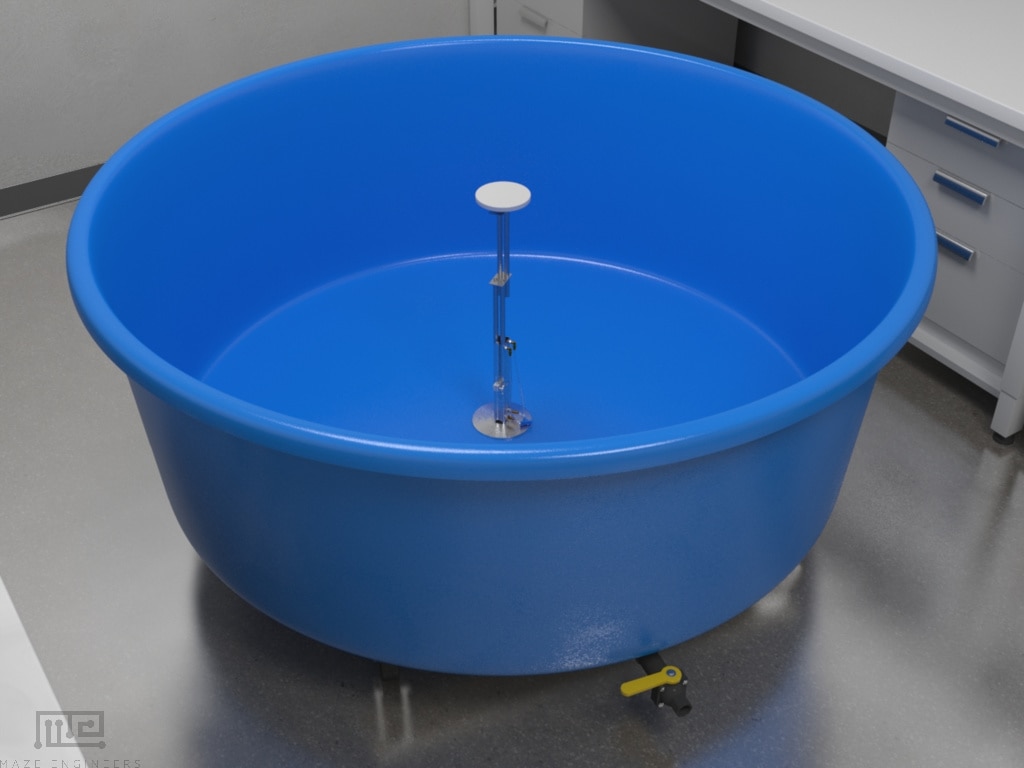
Spatial reference memory in rats and mice can be tested in rodents using the Morris Water Maze. Spatial reference memory is a cognitive process that is crucial for space recognition and locating objects in space.
Basic Overview of Procedure
The maze is quite simple in its design and it requires a pool of water and a platform that has to be submerged in the said pool. The rat/mouse is then placed in the pool of water and the animal starts swimming around to find solid ground due to fear-induced motivation from being placed in the water. Reference memory should direct the rat to the hidden platform location once it is placed in the same pool
again. It is also possible to test spatial working memory using this maze by changing the location of the platform on a daily basis, thus challenging the rodent to learn the location of the platform from the first try and remembering its location in the subsequent trials.
Morris Water Maze and Disease Models
The ability of the rodent to perform in the spatial memory task decreases with impaired neurocognitive abilities as observed in neurodegenerative and neuropsychiatric disorders, age-related models and in lesion models. The maze has been used to study various disease models, including endocrine abnormalities, strokes, Alzheimer’s disease, other neurodegenerative diseases, and their effects on learning and memory.
Measurements from the Morris Water Maze
To measure spatial memory, measurements are acquired by:
- recording the mouse/rat,
- calculating their latency to find the platform and the time spent in the target quadrant,
- using tracking and video recording software, the path traversed by the subject can be precisely mapped, and
- calculating and observing the velocity of the subject.
Rodent Care and Maze Hygiene
There are two more things you want to consider before you invest in behavioral mazes for rodents.
- Housing and care. This is important because of the total cost, think about the rodents and their housing and care. They are animals that have unique personalities and needs so they can live and reproduce properly. If you house them inappropriately they can become stressed and this will affect experimental result. The logic is simple, you want your rodents to be in good health and in the right mental state for the tests. You can prep them before the test, as you need to, and control the experiment all the way through, but if the animals are too irritated you lose control over the experiment and the results lose their objectivity. You can read more about this in the article: how housing conditions affect rodent behavior.
- Maze hygiene. The other thing you should consider is the hygiene of the mazes. These laboratory devices need to be cleaned after every use but this process is simple. You just need alcohol or any other sterilizing liquid to wipe the surfaces clean after each use. That should keep everything clean until the next experiment. Most of the classical mazes are manual and do not use electricity, so you do not have additional costs associated with mechanization. If you would like to know more, you can check out our article on how maze hygiene affects test results
Conclusion
The mazes covered here are essentially the classic mazes, a variety of mazes which collectively have helped evolved and shape the field of behavioral research.
These behavioral mazes are used by countless of research groups to measure a variety of behaviors and cognitive processes, from anxiety-like behaviors to sociability and spatial memory.
However, as important as having the right maze in your tool arsenal is, it is also crucial to follow appropriate research protocol (as covered in the beginning of this guide) and to have good maze hygiene and animal care.
Sometimes, things don’t go as planned. If you ever have any questions about behavioral research, check out our Neuroscience Behavioral Research Q&A section (or submit your own question there) and browse through common issues that researchers face while conducting behavioral research.
References
- Kaidanovich-Beilin, O., Lipina, T., Vukobradovic, I., Roder, J., & Woodgett, J. R. (2011). Assessment of Social Interaction Behaviors. Journal of Visualized Experiments : JoVE, (48), 2473. Advance online publication.
- Nadler JJ, Moy SS, Dold G, Trang D, Simmons N, Perez A, Young NB, Barbaro RP, Piven J, Magnuson TR, Crawley JN. (2004) Automated apparatus for quantitation of social approach behaviors in mice. Genes Brain Behav. 3(5):303-14.
- Bales KL, Solomon M, Jacob S, Crawley JN, Silverman JL, Larke RH, Sahagun E, Puhger KR, Pride MC, Mendoza SP. (2014) Long-term exposure to intranasal oxytocin in a mouse autism model. Transl Psychiatry. 4:e480. doi: 10.1038/tp.2014.117.
- Bolhuis, J.J., Biljlsma, S., Ansmink, P. (1986) Exponential decay of spatial memory of rats in a radial maze. Behav. Neural Biol. 46, 115-122
- Hodges, H. (1996) Maze procedures: the radial-arm and water maze compared. Cog. Brain Research 3, 167-181
- Olton, D.S. (1987) The radial arm maze as a tool in behavioral pharmacology. Physio. and Behav. 40, 793-797
- Olton, D.S., Collison, C., Werz, M.A.. (1977) Spatial memory and radial arm maze performance of rats. Learning and Motivation 8, 289-314
- Olton, D.S., Samuelson, R.J. (1976) Remembrance of places passed: Spatial memory in rats. J. Exper. Psych. Animal Behav. Processes 2, 97-116
- Paganelli RA, Benetolli A, Lima KC, Cestari-Junior LA, Favero Filho LA, Milani H. A novel version of the 8-arm radial maze: effects of cerebral ischemia on learning and memory. J Neurosci Methods. 2004 Jan 15;132(1):9-18.
- Spence K.W., Lippitt R. Journal of Experimental Psychology. Vol. 36. 1946. An experimental test of the sign-gestalt theory of trial and error learning; pp. 491–502.
- Shoji H, Hagihara H, Takao K, Hattori S, Miyakawa T. (2012) T-maze forced alternation and left-right discrimination tasks for assessing working and reference memory in mice. J Vis Exp. (60). pii: 3300. doi: 10.3791/3300.
- Kendler HH. (1947) An investigation of latent learning in a T-maze. J Comp Physiol Psychol. 40(4):265-70.
- BOTWINICK J, BRINLEY JF, ROBBIN JS. (1963) Learning and reversing a four-choice multiple Y-maze by rats of three ages. J Gerontol. 18:279-82.
- Deacon, R.M.J., Rawlins, N.P. (2006) T-Maze alternation in the rodent. Nature Protocols 1, 7-12
- Wright, R.L., Conrad, C.D. (2005) Chronic stress leave novelty-seeking behavior intact while impairing spatial recognition memory in the Y-maze. Stress. 8, 151-154
- Barnes, C.A. (1979) Memory deficits associated with senescence: a neurophysiological and behavioral study in the rat. J. Comp. Physiol. Psychol. 93, 74-104.
- Attar A, Liu T, Chan WT, Hayes J, Nejad M, Lei K, Bitan G. (2013) A shortened Barnes maze protocol reveals memory deficits at 4-months of age in the triple-transgenic mouse model of Alzheimer’s disease. PLoS One. 8(11):e80355. doi: 10.1371/journal.pone.0080355.
- Sunyer, B., Patil, S., Höger, H., Lubec, G. (2007). Barnes maze, a useful task to assess spatial reference memory in mice. Protocol exchange.
- Detke, M.J. & Lucki, I. (1995) Detection of serotonergic and noradrenergic antidepressants in the rat forced swimming test: the effects of water depth. Behav. Brain Res. 73, 43-46.
- Lucki, I. (1997) The forced swimming test as a model for core and component behavioral effects of antidepressant drugs. Behav. Pharmacol. 8, 523-532.
- Shimazoe T, Shibata S, Ueki S. (1987) A new forced swimming test for the evaluation of antidepressants in rats by recording vibration of a water tank. J Pharmacobiodyn. 10(11):639-43.
- Yuen E, Swanson S, Witkin JM. (2017) Prediction of human efficacious antidepressant doses using the mouse forced swim test. Pharmacol Biochem Behav. 161:22-29. doi: 10.1016/j.pbb.2017.09.002.
- Costall B, Jones BJ, Kelly ME, Naylor RJ, Tomkins DM. Exploration of mice in a black and white test box: validation as a model of anxiety. Pharmacol Biochem Behav, 32(3):777-85 (1989).
- Takao K & Miyakawa T. Light/dark transition test for mice. J Vis Exp, (1):104 (2006).
- Hascoët M and Bourin M. A new approach to the light/dark test procedure in mice. Pharmacol Biochem Behav, 60(3):645-53 (1998).
- Bourin M and Hascoët M. The mouse light/dark box test. Eur J Pharmacol, 463(1-3):55-65 (2003).
- Gentsch C, Lichtsteiner M, Feer H. (1987) Open field and elevated plus-maze: a behavioural comparison between spontaneously hypertensive (SHR) and Wistar-Kyoto (WKY) rats and the effects of chlordiazepoxide. Behav Brain Res. 25(2):101-7.
- Imhof JT, Coelho ZM, Schmitt ML, Morato GS, Carobrez AP. (1993) Influence of gender and age on performance of rats in the elevated plus maze apparatus. Behav Brain Res. 56(2):177-80.
- Komada, M., Takao, K., Miyakawa, T. (2008) Elevated plus maze for mice. J. Vis. Exp. 22, e1088
- Walf, A.A., Frye, C.A. (2007) The use of the elevated plus maze as an assay of anxiety-related behavior in rodents. Nature Protocols 2, 322-328
- Lecorps B, Rödel HG, Féron C (2016). Assessment of anxiety in open field and elevated plus maze using infrared thermography. Physiol Behav. 157:209-16. doi: 10.1016/j.physbeh.2016.02.014.
- Pohorecky LA, Sweeny A, Buckendahl P (2011). Differential sensitivity to amphetamine’s effect on open field behavior of psychosocially stressed male rats. Psychopharmacology (Berl). 218(1):281-92. doi: 10.1007/s00213-011-2339-8.
- Werboff J, Havlena J (1962). Effects of Aging on Open Field Behavior. Psychological Reports. 10(2), pp. 395 – 398. Doi: 10.2466/pr0.1962.10.2.395.
- Whyte LS, Hemsley KM, Lau AA, Hassiotis S, Saito T, Saido TC, Hopwood JJ, Sargeant TJ (2018). Reduction in open field activity in the absence of memory deficits in the AppNL-G-F knock-in mouse model of Alzheimer’s disease. Behav Brain Res. 336:177-181. doi: 10.1016/j.bbr.2017.09.006
- D’Hooge, R., & De Deyn, P.P. (2001) Applications of the Morris Water Maze in the study of learning and memory. Brain. Res. Reviews 36, 60-90
- Clark, R. E., Broadbent, N. J., & Squire, L. R. (2007). The hippocampus and spatial memory: findings with a novel modification of the water maze. Journal of Neuroscience, 27(25), 6647-6654.
- Bromley-Brits, K., Deng, Y., & Song, W. (2011) Morris Water Maze test for learning and memory deficits in Alzheimer’s disease model mice. JoVE 53, 2920.
- Wenk GL. (2004) Assessment of spatial memory using the radial arm maze and Morris water maze. Curr Protoc Neurosci. Chapter 8:Unit 8.5A. doi: 10.1002/0471142301.ns0805as26.

